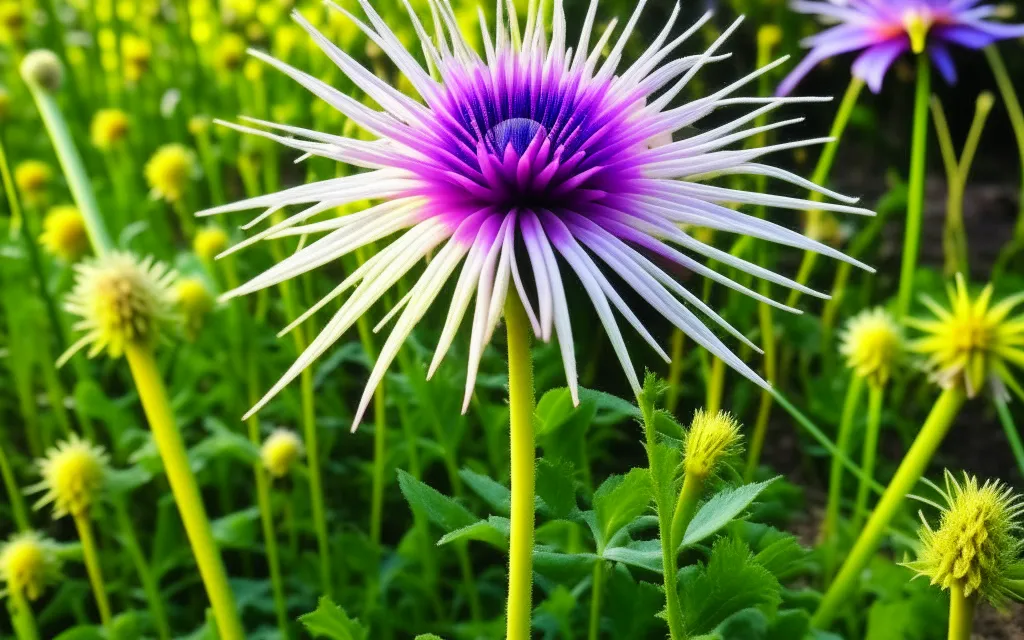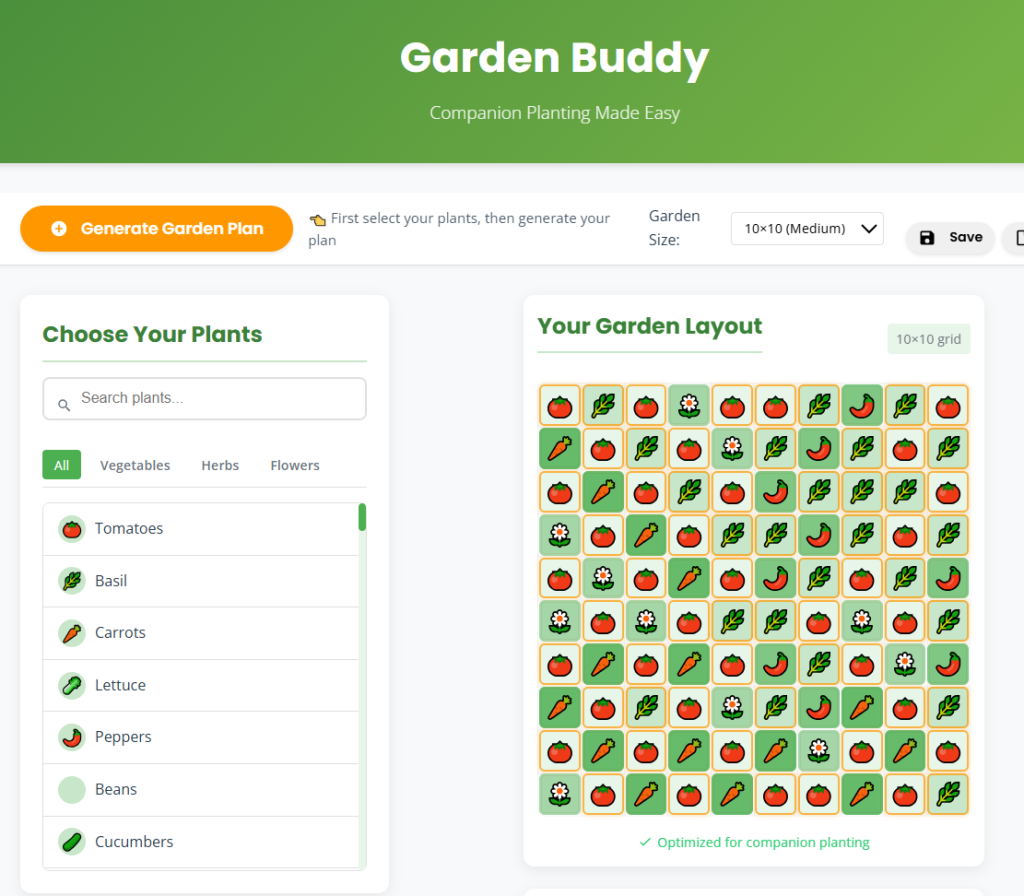
Everything You Need to Know About Growing Salsify: A Gardener’s Guide
Introduction
Have you ever tried your hand at growing Salsify? If not, you’re missing out on this unique and delicious vegetable! Salsify, often dubbed the “oyster plant” for its mild, oyster-like flavor, is a root crop that’s fairly easy to grow, given you follow a few key guidelines. It prefers well-drained soil rich in organic matter and a sunny spot in your garden.
Historically, Salsify dates back to the 16th century and was quite popular in Europe. It’s been used in various dishes and has a lovely, nutty taste that enhances a variety of meals. Want to get your hands dirty? You can grow Salsify both in traditional rows or even vertically using containers—making it a versatile plant for any gardening space! Plus, there are some fascinating variations to consider, like Black Salsify, which has a darker skin and a somewhat stronger flavor.
Benefits of Companion Planting for Salsify
Now, let’s chat about one of my favorite gardening strategies: companion planting. “What are the benefits of companion planting for Salsify?” you might ask. Well, I can tell you that planting Salsify alongside certain companion plants can not only boost your harvest but also protect your crops from pests. It’s like teaming up for a gardening adventure!
Good Companion Plants for Salsify
So, what are good companion plants for Salsify? Well, let’s highlight a couple of top picks: Carrots and Parsnips. Both of these roots have features that make them excellent companions for Salsify.
Carrots
Carrots are a classic choice and have been around since ancient times, evolving from their wild ancestor—recognizably different, mind you! Growing carrots alongside Salsify can lead to a more flavorful yield since they share similar growing requirements: they’ll thrive in the same soil type and enjoy that slightly cooler weather in spring and fall.
You might be wondering about varieties—nantes, imperator, and even purple carrots all have their distinct flavors and textures. If I were to pick, I’d lean towards the Nantes variety since it’s known for its sweet taste and tender texture. When planting, ideally, keep them a foot apart; they need space to grow without competing for nutrients!
Parsnips
Then we have parsnips, another delightful root vegetable that pairs beautifully with Salsify. Known since the Romans, parsnips are rich in vitamins and have an earthy sweetness that can complement the milder Salsify well in dishes. Just like carrots, they thrive in the same kind of soil and benefit from similar care.
As for varieties, the Hollow Crown is worth mentioning—it’s known for its high yields and tenderness. Just like with carrots, give them room to breathe by planting them about 12 inches apart. This ensures they can develop their rich flavors without fear of overcrowding!
Plants to Avoid
Interestingly, there aren’t any specific plants to avoid when it comes to Salsify. That’s good news for us gardeners! However, generally, it’s wise to keep an eye on spacing. While Salsify, carrots, and parsnips can coexist quite well, make sure they’re about 12 inches apart from each other. This distance allows each plant to soak up enough nutrients and sunlight without getting in each other’s way. After all, nobody likes a cramped garden party, right?
Summary
So to recap, Salsify pairs wonderfully with carrots and parsnips—two root crops that not only share similar requirements but also enhance each other’s growth. Keep them spaced out by about a foot so everyone has room to shine in your garden. With their combined flavors, you’ll be whipping up delicious meals in no time! Happy gardening, and here’s to a bountiful Salsify harvest!
Planting Guidelines for Companion Plants to Salsify
When it comes to planting Salsify, the age-old saying “good fences make good neighbors” can easily be adapted for us gardeners. What’s on the fence about companion planting? The right neighbors can help Salsify thrive by improving its growth, deterring pests, or even enhancing flavor. Let’s dig into the specifics of spacing recommendations for various companion plants that’ll make your garden flourish.
General Rule for Spacing Carrots and Parsnips from Salsify
As a general rule, you should aim to space both carrots and parsnips about 12-18 inches away from Salsify. Since both crops have somewhat similar growth habits, giving them a bit of breathing room will help prevent competition for nutrients. Plus, having that space will allow air circulation to keep diseases at bay.
Guidelines for Tall Companions
When selecting taller companions, the height of the plants can create shade or shelter for Salsify. Ideally, space these taller plants around 18-24 inches away. Examples include:
Guidelines for Low-Growing Companions
Low-growing plants are great for filling in the garden and can protect the soil from erosion. A distance of 6-12 inches is perfect for these companions. Some options are:
Guidelines for Strongly Aromatic Companions
Strongly aromatic plants can deter pests, making them ideal companions. Aim for a spacing of 12-18 inches. Consider these:
Guidelines for Nutrient-Heavy Feeders
Nutrient-heavy feeders can assist in replenishing the soil, helping Salsify thrive. These companions should be spaced about 18-24 inches apart:
Guidelines for Spreading or Vining Companions
Spreading or vining plants need a bit more space to prevent overcrowding, so aim for 24-36 inches apart. Examples include:
Adjusting for Garden Conditions
Remember, these guidelines are just that—guidelines! It’s vital to adjust based on your specific garden conditions and the matured sizes of your chosen companion plants. Pay attention to how much sunlight your garden gets, recent weather patterns, and any other plants you may be integrating into the mix.
Summary of Carrots and Parsnips
Carrots
Carrots, when planted with Salsify, can coexist well with a variety of plants. They thrive alongside:
Parsnips
Parsnips are another valuable root crop that pairs well with several companions. Good companions include:
In short, by thoughtfully selecting companion plants and giving them the right spacing, you can create a garden that’s not only productive but harmonious. Happy gardening!

Leave a Reply